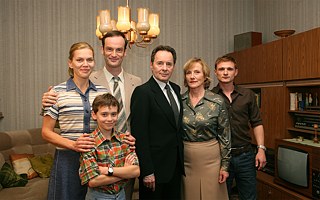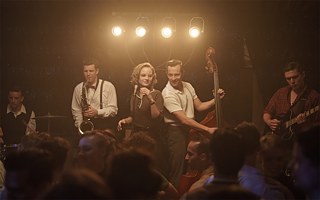Annette Hess
Series success

While the German television audience is unlikely to recognize her name, her stories move millions: she penned the “Weissensee” series set among East Berlin’s artists and Stasi loyalists, along with the “Ku’damm 56/59” TV series. Author Annette Hess has more than proven her impressive versatility throughout her career.
By Romy König
20 years as a screenwriter
Annette Hess has worked as a screenwriter since 1998. As a student at the University of the Arts (UdK) in Berlin, she began working as a programme and directing assistant, journalist and screenplay editor. Her first nationwide success was also her UdK thesis: Was nützt die Liebe in Gedanken (What Use Is Love in Thought Alone) was the name of the production filmed by director Achim von Borries and released in 2004. In 2007, her first television film followed with Die Frau vom Checkpoint-Charlie (The Woman from Checkpoint Charlie).
“Series create an entire world”
Annette Hess is especially partial to the series format, as its length allows her to develop her characters more in depth and give them relatable traits. It is also an opportunity for a narrator to explore topics with greater intensity, and to create more atmosphere than in a film. Her historical TV series, Weissensee (2010 on) and Ku'damm56/59 (2016 on) was watched by millions on public television. "A good series can create an entire world," the author says.

Experiencing history through stories
Hess is not driven by a desire to simply retell history, which would be just as boring as history class at school. She tries to create living characters with whom the viewer can “experience history”. Her writing is often based on personal experience where distance in time and location provide space for story development, she told the Tagespiegel. Annette Hess’ biography has little overlap with the German Democratic Republic, yet she finds East Germany’s history moving. The GDR is still “a bit of a puzzle”, she adds.
And now a book
In her debut novel Deutsches Haus (The German House), published in 2018, Annette Hess remains true to her principle of telling history through personal stories. The protagonist is a young woman working as an interpreter at the first Auschwitz trial in Frankfurt in 1963 and has to deal with her family's past over the course of the case. According to the publisher, the novel was sold in 15 countries six months after publication.
